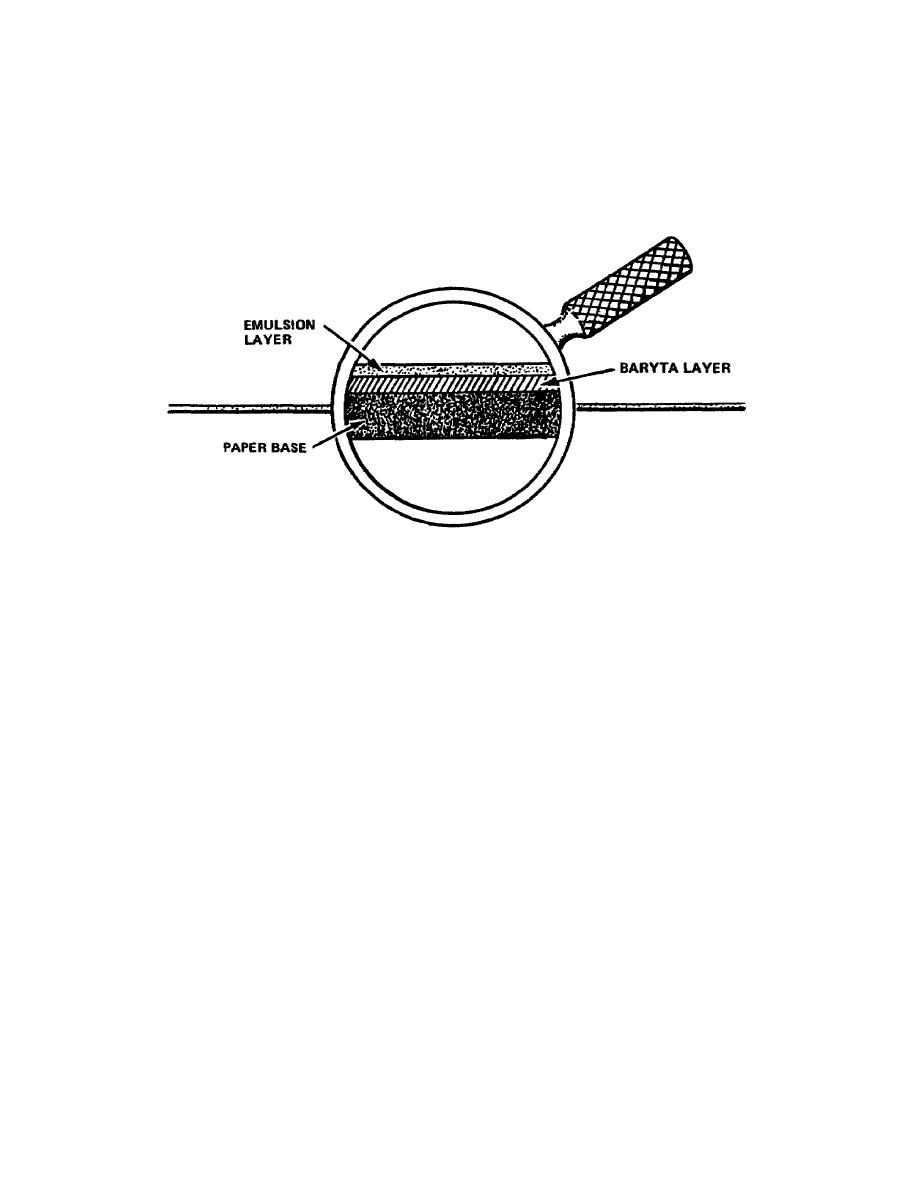
LESSON 1
(1) A paper base
(2) A baryta layer
(3) An emulsion
Figure 112. Cross section of a sheet of photographic printing paper
b. Let's briefly discuss the three layers of photographic printing
paper.
(1) Base. The base must be chemically pure to ensure that it will
not interfere with the chemical processes to which the emulsion is
subjected. Accordingly, the paper is an ideal support for sensitized
emulsions because it reflects light and is flexible, economical and durable.
Paper is available with a single, medium or double weight base.
(2) Baryta layer. Although paper has a high degree of natural
reflectivity, the quality of a photographic print can be increased if the
reflectivity is increased. This is accomplished by adding to the paper a
gelatin layer containing baryta crystals (fig 112).
(3) Emulsion. The emulsion layer, which contains minute silver
halides suspended in a gelatin medium is thin. Printing paper emulsions
need only reproduce the tonal range of a negative, while film emulsions must
have the capability of interpreting brightness, shadows, colors, and related
details of a given scene or object. Accordingly, printing paper emulsions
are of a much simpler structure than film emulsions.
25



 Previous Page
Previous Page
